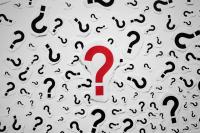 A recent Gallup Poll reports that people are grim about the state of the economy, with an economic confidence of -17, which is the difference between those saying it is getting better and those who say it’s getting worse. Although it has improved substantially since the -39 reading in Nov. 2013, according to slate.com, most all economic indicators point to burgeoning data: The unemployment rate has fallen from 7.3 to 6.2; the second quarter gross domestic product (GDP) rose four percent; income grew in 46 states in the first quarter, and faster than inflation; of almost 90 percent of S&P 500 companies reporting, 73 percent said earnings grew at an 8.4 percent this year based on revenue growth of 4.3 percent; the housing market continues to improve, albeit slowly; and the Commerce Department reports the first seven months of 2014 marked a 3.7 percent sales growth compared to 2013.
A recent Gallup Poll reports that people are grim about the state of the economy, with an economic confidence of -17, which is the difference between those saying it is getting better and those who say it’s getting worse. Although it has improved substantially since the -39 reading in Nov. 2013, according to slate.com, most all economic indicators point to burgeoning data: The unemployment rate has fallen from 7.3 to 6.2; the second quarter gross domestic product (GDP) rose four percent; income grew in 46 states in the first quarter, and faster than inflation; of almost 90 percent of S&P 500 companies reporting, 73 percent said earnings grew at an 8.4 percent this year based on revenue growth of 4.3 percent; the housing market continues to improve, albeit slowly; and the Commerce Department reports the first seven months of 2014 marked a 3.7 percent sales growth compared to 2013.
“There is no easy answer here. For now, there is a genuine paradox between multiple inputs showing clear and widespread improvement in economic life—including modest income growth—and clear and widespread conviction that there is not much improvement. The problem lies with economic data that essentially aggregates and averages a wide variety of experiences into a few synthetic numbers. We arrive at one composite number, with little regard for the wide and often extreme variations that these numbers mask. There is also the complicated issue of how much income growth goes to a very small percentage of the population,” as MHProNews understands it. The fact that millions are not optimistic about the economy cannot be ignored, but the hard core numbers indicate things are improving. ##
(Image credit: housingwire.com)

























